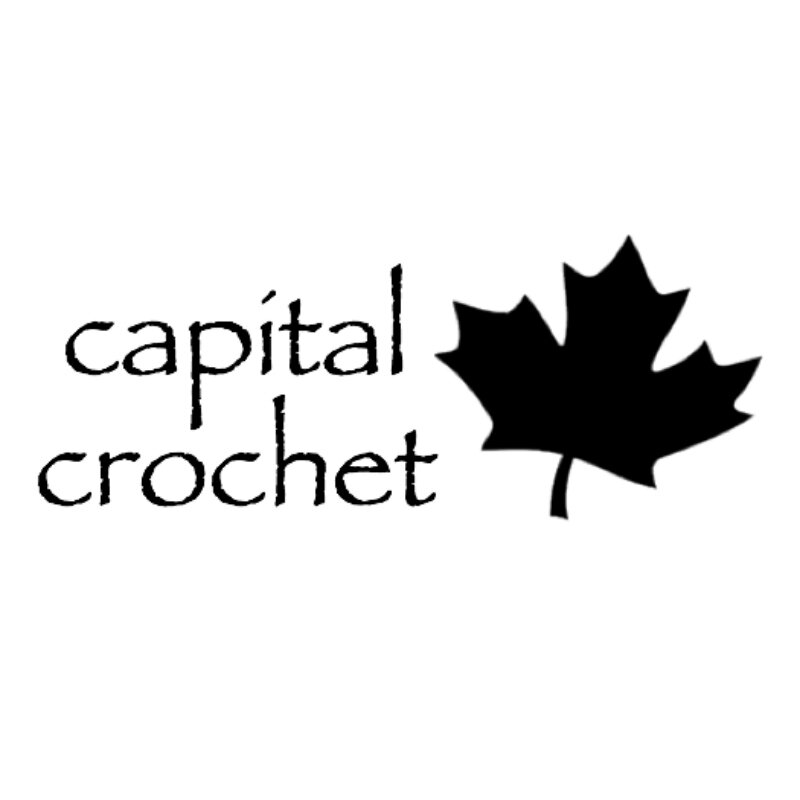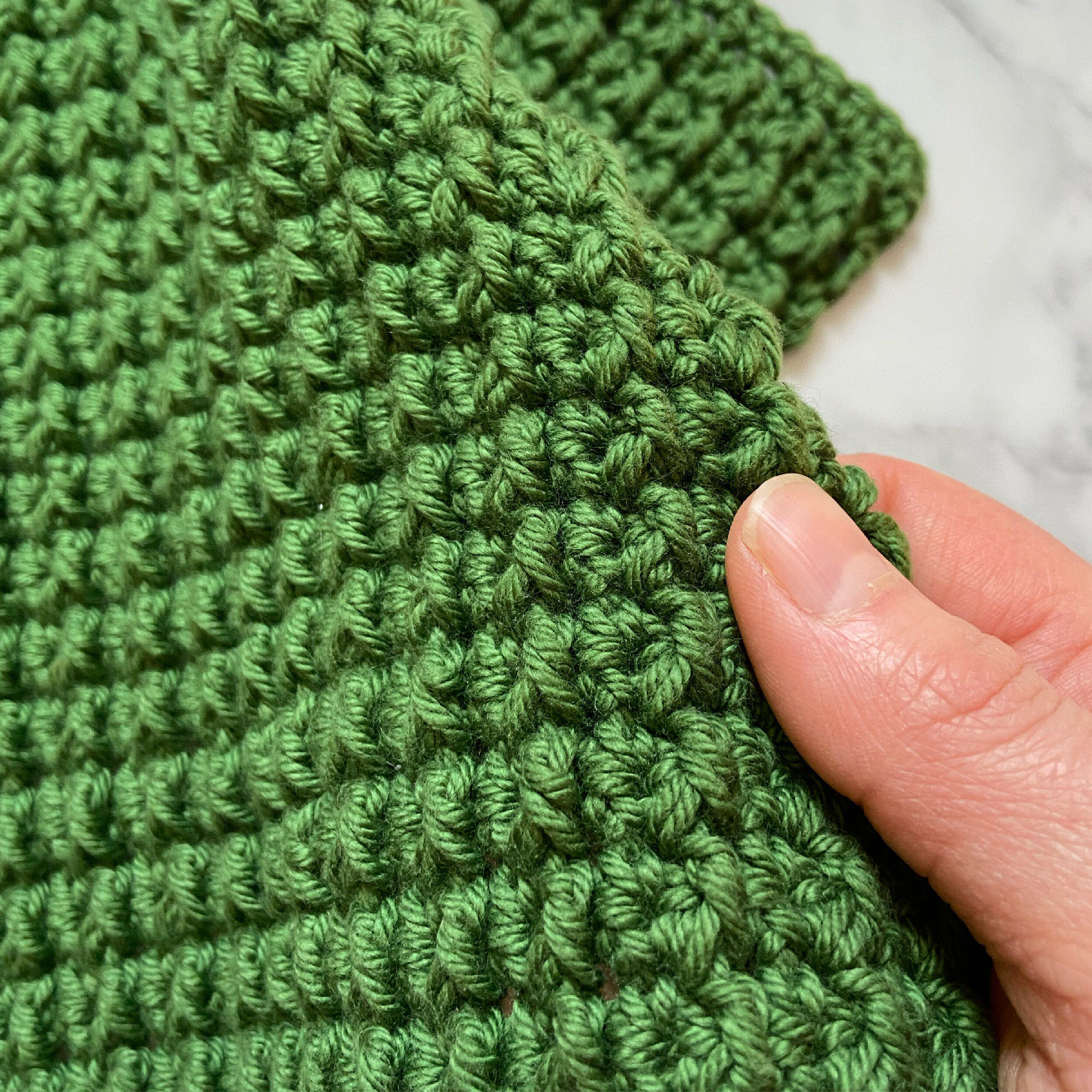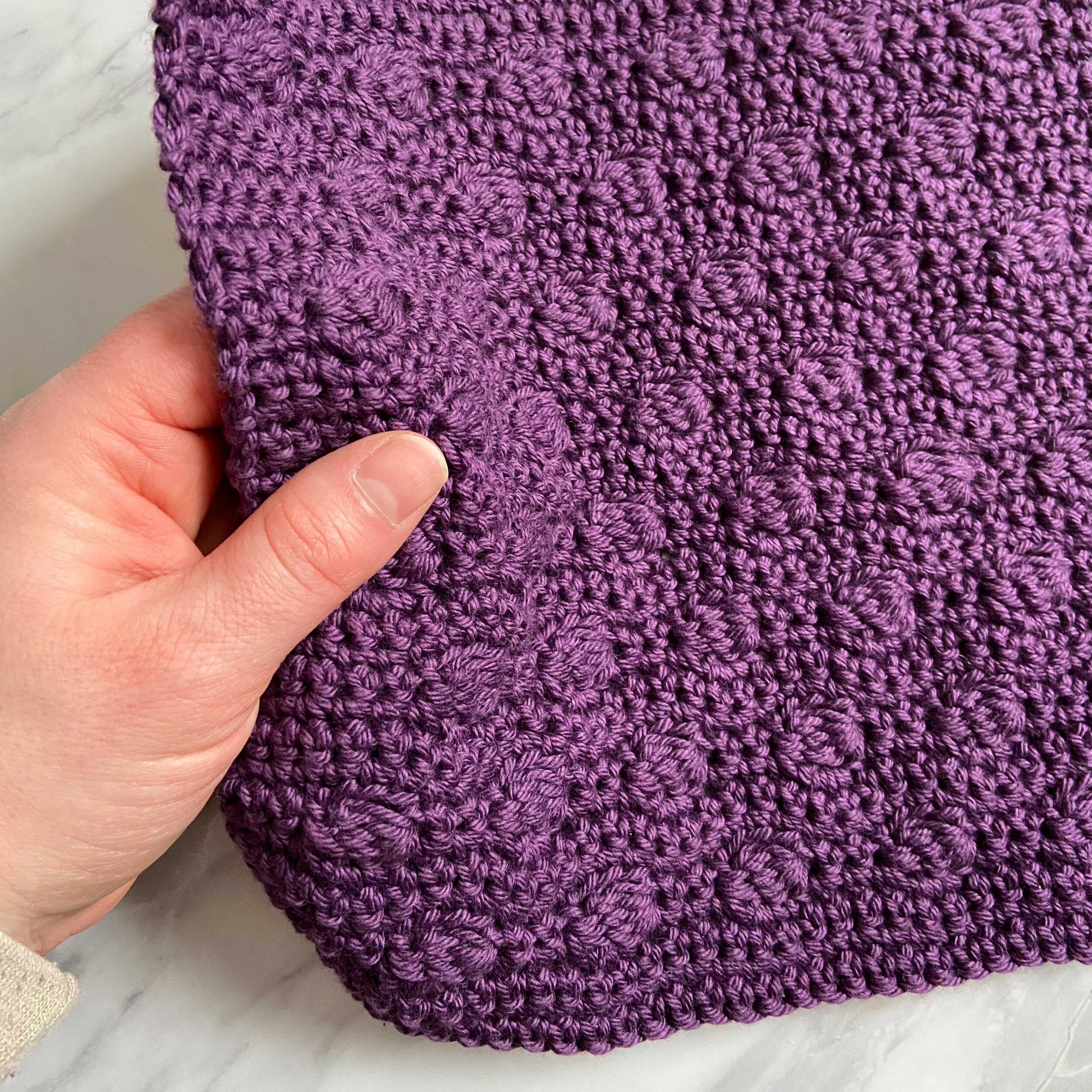Stitch Exploration Series - Pollyanna Dishcloth
/This post may contain affiliate links, meaning that if you click through and make a purchase, I earn a small commission at no extra cost to you. This helps support my business and makes it possible for me to bring you free content.
It’s that time again, friends - the newest pattern in the Stitch Exploration Series is this green beauty, the Pollyanna Dishcloth!
If you’re new ‘round these parts, this monthly series is dedicated to exploring different stitch techniques and textures. Check out the other patterns in the series HERE.
I find that when I’m designing, I gravitate to the same couple of stitches in my designs, and I hope that this series will allow me to test out new skills and get outside my comfort zone without the pressure of having to create a whole garment. I’ve chosen dishcloths because they’re small enough to finish up quickly, but large enough to get a general idea of the fabric the stitch pattern will create!
This month’s pattern features a gorgeous bright green yarn and texture like the beautiful plant it is named for - read on to learn more about my dive down the Pollyanna rabbit hole!
When I was thinking about what to name this pattern, I started looking at different ground cover plants, because I thought this texture reminded me of the moss-like growth you often see between stones in pretty, manicured garden pathways. I found soleirolia soleirolii - what a mouthful! It goes by many common names, one of which is Pollyanna Vine. I liked the way that rolled off the tongue.
Image credit: Shutterstock.
I always do my due diligence when naming patterns. I like to make sure there are no similar patterns with the same name, and I also like to make sure I’m not inadvertently using a name or word that has alternate meanings or associations. In searching “Pollyanna,” I found some interesting info.
The character Pollyanna is from a book written in 1913 by Eleanor H. Porter. The title character is a young girl who, despite all the unpleasant things in her life, chooses to see the positive elements in all situations. Psychology picked up on this in the 1970s and applied the name Pollyanna Principle to the psychological construct known as the positivity bias. There is research that shows people generally tend to be more positive and upbeat than miserable and cranky, and we also tend to assume the best about situations in which we do not have the complete story. Of course, there are exceptions, but as a student who is about to finish up a Psychology degree, I was super excited to go down this rabbit hole and learn a little more about human nature.
To make a long story short, I chose the name Pollyanna for this pattern because it reminds me of the plant, but there’s so much more in a name. I thought it was important to share this because it’s part of my creative process, and I know there are lots of fellow polymaths out there who enjoy learning new tidbits of information!
For this series, I’ve chosen a beautiful, durable cotton yarn, Dishie from WeCrochet. It comes in lots of fun colours (30 solids in total, plus there are also Dishie Twist and Dishie Multi!), and it is really nice to work with. It’s also really durable, making it great for dishcloths! In my experience so far, this yarn really holds up well during tough scrubbing.
If you missed the first two patterns in the series, check out the Studded Dishcloth (yellow) and the Mulberry Dishcloth (purple).
Materials
Hook - US G/4mm, or size needed to meet gauge.
Yarn - WeCrochet Dishie, 100% cotton, 190yds (174m)/100g (3.5oz) per skein. I used approx. 125yds (114m) of the colourway Jalapeño.
Notions - scissors, tape measure, yarn needle.
Notes
Ch 2 to start each row counts as a sc st.
Gauge is not critical for this project, however, if yardage is a concern, you should aim to meet it as closely as possible. No one will judge an extra half inch on your dishcloth!
Generally, I do not block cotton washcloths, because they’re just going to get wet anyway. If you’re making for gifting, or just want to straighten things out, feel free to block as you see fit.
Sizing
Gauge - 4”/10cm = 17 sts x 18 rows in pattern stitch, unblocked.
Finished measurements - approx. 9.25”/23.5cm square.
Terminology/Abbreviations
This pattern uses standard US terms as detailed by the Craft Yarn Council:
Ch - chain
Dc - double crochet
Fpdc - front post double crochet (see Special Stitch section)
St(s) - stitch(es)
Sc - single crochet
RS/WS: right side and wrong side of your dishcloth
* - repeat instructions following the asterisk as specified
Special Stitch
Front post double crochet (fpdc) - yarn over, insert hook from right to left around the back of the post of the st indicated (pushing the post forward), pull up a loop. (Yarn over and pull through two loops) twice. For a helpful tutorial video, click HERE.
Pattern Instructions
Row 1 (RS). Ch 40 and turn. Starting in the third ch from hook (first 2 chs count as the first sc), and working into the back bumps of each ch st, sc across and turn. <39 sts>
Row 2 (WS). Ch 2, sc in each st across until the last st. Sc in ch-2 space and turn.
Row 3. Ch 2, fpdc around the next st 2 rows below, *sc next st, fpdc around the next st 2 rows below.* Repeat from * to * until the last st. Sc in ch-2 space and turn.
Repeat Rows 2 and 3 until work measures approx. 9” or desired length, ending on a repeat of Row 3. For me, this was 39 total rows.
Last Row. Ch 2, sc in each st across until the last st. Sc in ch-2 space.
Fasten off and weave in the ends.
Variations
To make your dishcloth narrower or wider, start with fewer or more chain sts in Row 1, making sure to start with an even number.
To make your dishcloth shorter or longer, work fewer or more repeats of Rows 2 and 3. Keep in mind that this will adjust the yardage required.
Save this pattern to your Ravelry queue, or add a project to the pattern page!
Congratulations on finishing your Pollyanna Dishcloth! Are you a fan of post stitches? I love how they add relief to a project, and they work well for dishcloths because they offer robust structure for tough scrubbing.
I’ve used post stitches quite a bit to create ribbing in garment projects, but this is the first time I’ve featured the stitches as the main texture in a pattern. I wonder how it would look as the main texture in a sweater using softer yarn… So many new things to explore!
I’m having a lot of fun exploring these new-to-me techniques, and I hope you are too! I’d love to see your dishcloths (in finished or WIP form!), or how you’re using the things you’re learning here in your own designs. Share your dishcloth on Instagram using the hashtags #PollyannaDishcloth and #StitchExplorationSeries, and tag me, @capital.crochet!
You may sell finished items made from this pattern, but please credit me as the designer by linking back to this blog post.
Thank you so much for your support! If you’d like to be the first to know about new patterns in this series and other blog posts, make sure to subscribe to my newsletter below.








